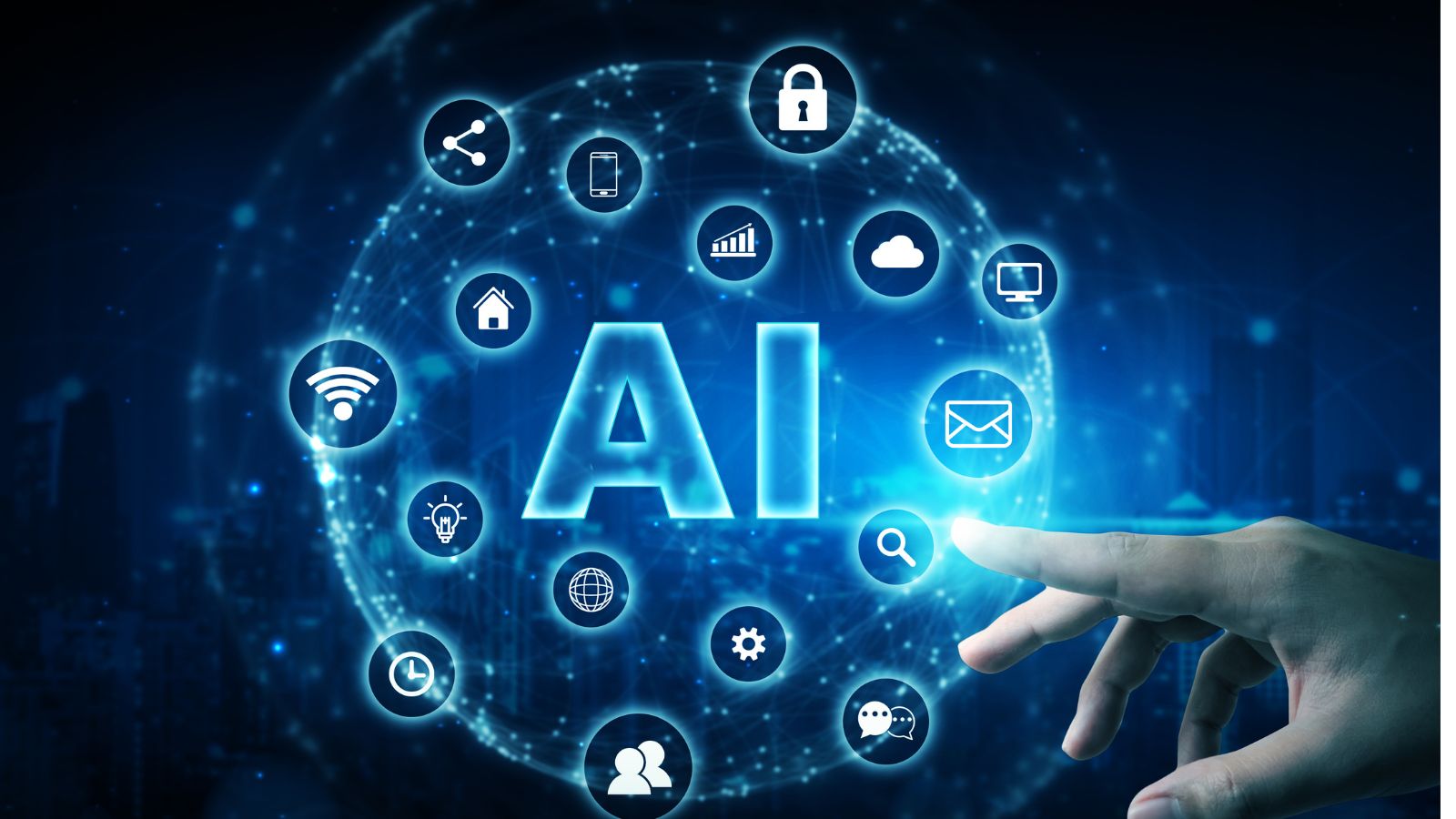The vehicle and transportation industries are being digitally transformed, and perhaps the strongest force driving this transformation is Artificial Intelligence (AI). With AI tools continually evolving, marketing for the automotive industry has evolved into something new. From designing social media graphics to video commercials, AI-driven content creation is transforming the way transportation businesses interact with their audience. This article discusses how AI is being utilized to develop dynamic and interactive content for transportation and vehicle companies, enabling them to remain competitive in a competitive market.
The Rise of AI In Transportation Marketing
The automotive industry has always been highly competitive, with brands constantly innovating to stand out in the crowded marketplace. Traditional marketing methods, while still effective, can be time-consuming and costly. However, AI has introduced a new way to streamline content creation, allowing brands to produce high-quality marketing materials quickly and efficiently. By using AI-powered tools, transportation companies can now create personalized and impactful content that resonates with their target audience.
The applications of AI in content creation range from social media campaigns to video commercials. It allows transportation companies to create eye-catching visuals, catchy commercials, and social media posts with less human intervention. These tools leverage machine learning algorithms to scan massive amounts of data, allowing them to forecast trends and generate content automatically based on audience preferences. Consequently, AI is enabling marketers to create content that not only grabs attention but also encourages more meaningful interaction with customers.
AI For Social Media Visuals
Social media sites are crucial for transportation marketing, with billions of users posting content daily. The catch is to produce content that will cut through a sea of posts. AI tools have made it easier by providing smart design features that automate the process of creating graphics. With AI, transportation businesses can create attention-grabbing visuals that will appeal to potential customers.

For instance, it can make beautiful vehicle showcase graphics, promo posters, and infographics highlighting the newest features of a vehicle or transportation service. They apply natural language processing (NLP) and machine vision to craft visuals that are not only visually beautiful but also according to each platform’s requirements. AI tools can resize images automatically for Instagram, Facebook, Twitter, and LinkedIn, so each post is optimized for maximum effect.
In addition, AI can be used to create content based on trending issues. By analyzing social media activity in real time, AI tools can detect hot hashtags, popular topics, and viral themes and then design visuals that leverage these trends. With this responsiveness, marketers can adapt to changes in consumer interest quickly, keeping content fresh and on point.
Video Ads And AI-Generated Content
When it comes to transport marketing, video is the most effective medium. Videos can grab the attention of the viewer and deliver comprehensive information within a short span, which makes them perfect for demonstrating cars, new features, or limited-period offers. But developing good-quality videos used to demand a lot of time and effort. That’s where AI comes into the picture.
Artificial intelligence video generation tools have made video ad-making for the transportation sector a walk in the park. AI video generators can produce top-notch videos with basic text descriptions, cutting down on intricate video editing. AI video generators allow transportation firms to easily make videos that feature new car models, describe service attributes, or take virtual tours of their cars. By studying customer tastes, AI can even customize these videos to appeal to certain groups, making them more likely to engage.
At the midway point through the process of creating content, AI technology can be incorporated into transitions, animations, and voiceovers to speed up and streamline video creation. For instance, an AI tool can automatically develop a video that highlights the features of a car from start to finish, producing a script, choosing the footage, and incorporating voiceovers within minutes. Such automation gives marketers the power to roll out campaigns quicker without compromising on quality.
To make the process of creating videos even more straightforward, most AI tools currently have easy-to-use interfaces. Sites such as the AI video generator make it simpler than ever before for marketers to produce videos without needing any technical knowledge. These tools enable users to provide basic prompts and create high-quality videos, taking less time and eliminating the expense of video production teams. With these developments, transport businesses are now able to produce compelling video ads at scale, marketing new products or services rapidly and effectively.
Personalizing Content With AI Tools
Today’s digital world operates on the concept of personalization. Customers would like to consume content that has been addressed towards their individuality, i.e., their likes, dislikes, and behaviors. AI is opening doors for transport marketers to simplify the process of delivering such contextualized content. With machine learning algorithms, AI software can run through user history and generate context-specific content on behalf of them.
For example, a computer vision-based video app can extract data from a customer’s past interactions with a brand, such as browsing patterns or purchase history, and design personalized video advertisements or social media content that speaks to them. This kind of personalization heightens the probability that the viewer will interact with the content, whether by clicking on an advertisement or looking deeper into a model of a vehicle.
Personalization is also applicable to the timing of content publication. AI is able to track when users are most engaged on social media sites and post or video ads based on that information, so content will be viewed at the most optimal time for interaction.

AI Video Apps For Streamlining Content Creation
Another area where AI is changing transportation marketing is with the application of video creator apps. These apps aim to make video content creation as simple as possible by providing robust features in a straightforward package. From creating videos for social media updates, advertising campaigns, or customer interaction, these apps enable marketers to produce professional-quality videos quickly without having to be videography experts.
For instance, an artificial intelligence video app may accept a product description or script and then produce a visual presentation of a video that details the features of the product visually, includes testimonials from customers, and showcases benefits. This provides a convenient opportunity for transportation providers to create very diverse content that addresses various customer segments.
With these AI applications, transport organizations can keep their video content refreshed, relevant, and interesting all the time. These applications also enable marketers to try out alternative video formats like explainer videos, tutorials, and promotional videos, allowing them to be adaptable to various marketing.
The Benefits Of AI In Transportation Marketing
AI content creation presents several advantages to transportation and vehicle companies. In the first instance, it enables marketing professionals to produce quality content more quickly and economically, saving money and time. Through AI, much of the content creation process is automated, lowering the demand for human effort, which allows teams to concentrate on other critical areas of marketing.
Furthermore, AI enables improved targeting and personalization, which can ensure that the right message arrives at the intended audience. By examining consumer insights, AI programs can develop content that speaks directly to targeted populations, boosting prospects for engagement and conversion.
Moreover, AI helps transportation companies stay on top of trends and respond to market shifts quickly. With real-time data analysis, AI tools can generate content that aligns with current trends, ensuring that marketing efforts remain relevant and timely.
Conclusion
AI-powered content creation is revolutionizing the way transportation and vehicle companies engage with their customers. From the production of social media graphics to the creation of video advertisements, AI technologies are automating the content generation process and enabling marketers to create high-quality, targeted content at scale. By enabling them to respond quickly to trends and optimize content for their audience, AI is keeping transport businesses ahead in a fast-changing market. Be it AI video creators or convenient AI video software, the marketing future in the automobile sector appears more efficient and innovative than ever.

